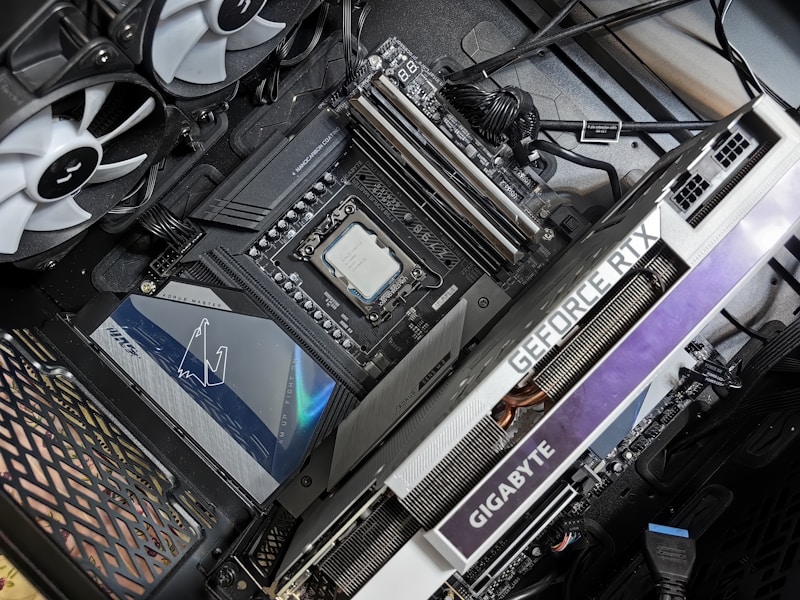Unlocking the Future: Advanced Heat Management Systems for Modern Applications
Unlocking the Future: Advanced Heat Management Systems for Modern Applications
Understanding Advanced Heat Management Systems
In today's rapidly evolving technological landscape, the importance of advanced heat management systems cannot be overstated. With the proliferation of electronic devices and high-performance machinery, managing heat effectively has become crucial for ensuring efficiency, longevity, and safety. This article will explore the significance, applications, and technologies behind heat management systems, providing insights into why they are essential in various industries.
The Importance of Heat Management
Every electronic component generates heat, and without proper management, this can lead to decreased performance and shortened lifespan. Advanced heat management systems play a pivotal role in dissipating heat away from critical components. They enhance performance, improve reliability, and ensure that devices operate within their thermal limits.
Key Benefits of Advanced Heat Management Systems
| Benefit | Description |
| Improved Performance | Optimizing thermal conditions ensures that devices can operate at peak efficiency. |
| Extended Lifespan | Efficient heat dissipation minimizes wear and tear on components. |
| Enhanced Safety | Prevention of overheating reduces the risk of fires and equipment failure. |
| Energy Efficiency | Heat management systems contribute to reduced energy consumption across applications. |
Applications of Advanced Heat Management Systems
Advanced heat management systems are utilized in a variety of fields. Some notable applications include:
1. Electronics and Semiconductor Industry
Modern electronics and semiconductors are compact and energy-dense. Advanced heat management systems, such as liquid cooling and thermoelectric coolers, are essential in dissipating heat effectively, ensuring that devices like smartphones, laptops, and servers remain functional and efficient.

2. Automotive Industry
In modern vehicles, particularly electric and hybrid models, heat management systems are integral. These systems help maintain optimal operating temperatures for batteries and power electronics, contributing to improved efficiency and safety on the road.
3. Aerospace and Aviation
In the aerospace sector, heat management systems are vital for protecting sensitive components from extreme temperatures during flight. Aircraft use advanced thermal protection systems to safeguard avionics and engines, contributing to overall flight safety.
Technologies Behind Advanced Heat Management Systems
The landscape of heat management technologies is continuously evolving. Here are some of the most advanced technologies currently in use:
1. Heat Pipes
Heat pipes are highly efficient thermal conductors that transfer heat from one area to another. They consist of a sealed pipe containing a small amount of liquid. As heat is absorbed, the liquid vaporizes, traveling to a cooler section where it condenses, releasing heat.
2. Phase Change Materials (PCMs)
PCMs absorb and release heat as they change from solid to liquid and back again. This property makes them ideal for stabilizing temperature, particularly in buildings and electronics.
3. Liquid Cooling Systems
These systems circulate coolant through pipes and blocks attached to heat-generating components. They are commonly used in high-performance computing systems and electric vehicles to manage heat effectively.
Design Considerations for Heat Management Systems
When designing advanced heat management systems, several factors need to be considered:
1. Thermal Conductivity
Materials used in heat management systems must have high thermal conductivity to ensure efficient heat transfer.
2. Weight and Size
Particularly in aerospace and automotive applications, minimizing weight while maximizing cooling efficiency is critical.
3. Cost-Effectiveness
While advanced systems may offer superior performance, developers must balance cost and functionality to ensure systems are economically viable.
Future Trends in Heat Management Systems
As technology continues to advance, so do the methodologies and inventions in heat management systems. Some anticipated trends include:
1. Smart Thermal Management
Integration of IoT (Internet of Things) technology allows for real-time monitoring and management of thermal conditions, leading to improvements in efficiency and predictive maintenance.
2. Nano-Engineering in Heat Transfer Materials
Research into nanomaterials promises breakthroughs in thermal conductors with unprecedented efficiency and lighter weight, changing the landscape of heat management.
Conclusion and Recommendations
In conclusion, advanced heat management systems are crucial for the efficient functioning of modern electronics, automotive, aerospace, and various other industries. As technology progresses, the need for innovative and effective heat management solutions will only increase. Stakeholders must invest in advanced systems and technologies to mitigate overheating risks, improve performance, and extend the lifespan of critical components.
For anyone interested in exploring advanced heat management solutions, consider researching available technologies deeply, assessing your specific needs, and consulting industry experts to stay ahead in this rapidly evolving field. Embrace innovation and make informed decisions to ensure efficiency and safety in your operations.
